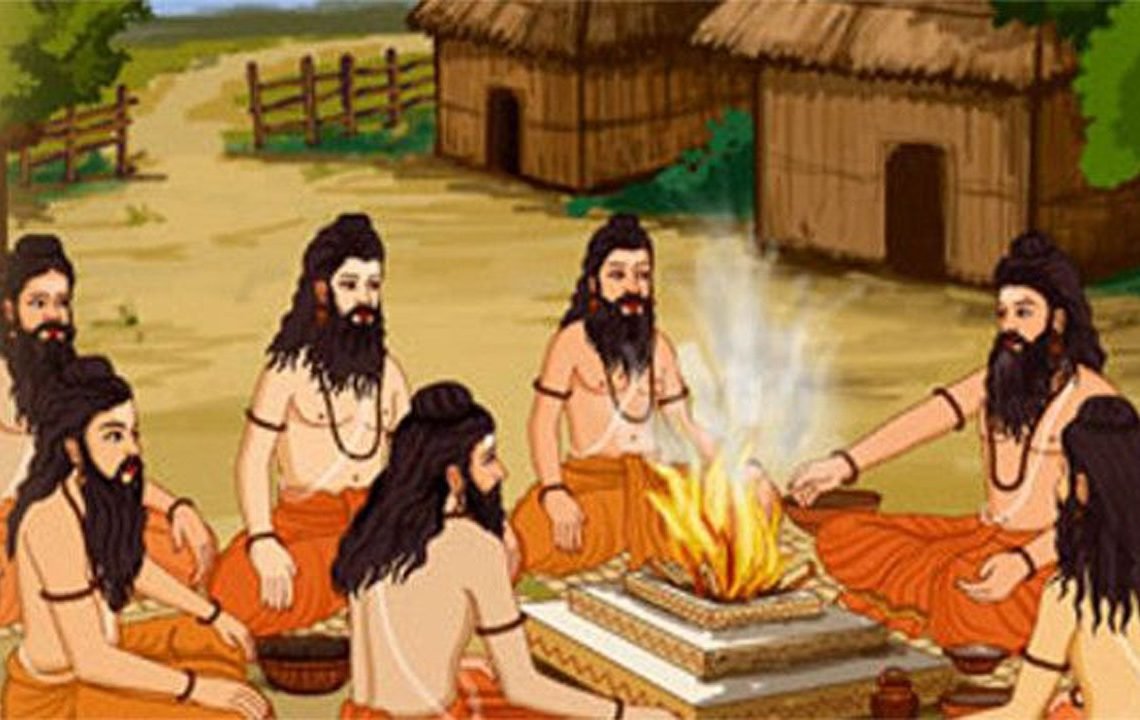What is Gotra? In Vedic Sanskrit, the word ‘gotra’ means ‘cowshed’. However, it refers to the lineage or clan assigned to a Hindu at birth in the social context. As most Hindu system traditions are patrilineal, the newly born gets gotra of his father. In some communities in southern India, such as among Kerala’s Nairs, one gets the gotra through the mother. In Vedic society, the gotra system was initially used by the Sanatana. It is the ancient-most people for identification of the lineage. In traditional Hindu families, gotra is important while fixing marriages as marriage in same gotra cannot occur because this may affect the health of the progeny. It is not allowed under the rule of exogamy in the traditional system. People within the same gotra system in India are kin, therefore marrying kin is incest.
The Distinction of Gotra from Kula
Before proceeding to Gotra system, it is necessary to distinguish gotra from a kula. A kula is a set of people following similar cultural practices, often worshipping the same divinity—the kula devata or Devi, the god or goddess of the clan— and following the same rituals, but they need not belong to the same lineage. Therefore, people married within the kula. Gotras relates directly to the original seven Mula Purusha or the Saptarshis
Traditionally, Brahmanical gotras relate directly to the original seven Mula Purusha or the saptarshis—Pulastya, Pulaha, Kratu, Atri, Angiras, Vashishtha and Marichi. With time, men extended the concept of gotra system beyond Brahmins. In other words, in the Sanatana society, there were only seven gotras. But later, their number increased and people added more gotras were addedafter the name of other mula purushas who were not Brahmins. Other terms synonymous with gotra are vamsha, vamshaja, purvajana and pitri. In the present-day Hindu system, we apply gotra to all the lineage systems. In fact, many modern Hindus have lineages that do not follow the Vedic classification.
Marriage in same Gotra
The modern generation is unmindful of the Gotra system and looks upon it as an outdated concept. According to a German study, marriages outside one’s gotra are healthier and desirable because of a better genetic mutation. The ancient rishis well realized this anatomical fact. They forbade marriage within seven generations of the same gotras because of genetic impacts up to seven generations. Modern man and medical science must research this subject to discover the truth of this age-old belief.
So many modern-day diseases that have appeared in the last four decades may give geneticists an insight into the veracity of the gotra system. The adverse effects of such marriages may not be immediately evident. However, they certainly show up in the offspring over some time. These days, the purity of line is very hard to maintain because of prevalent lifestyles and liberal sexual practices. Therefore, gotra has become more or less irrelevant.
Marriages in same Gotra are legal
Marriage in same gotra is legal, though traditional social set-ups, particularly in Uttar Pradesh, Rajasthan and Haryana often agitate over them. The khap panchayats, the self-styled village courts, should recognize marriages within the same sphere as legal and should be socially accepted. Those who oppose sagotra—belonging to the same lineage or gotras—marriages must realize that ancient wisdom is valid only when the parents’ own lineage is pure and uncorrupted. One cannot claim the same in present-day society and, therefore, their argument is not valid.
The growing demand of khap panchayats to amend the Hindu Marriage Act to disallow it under the garb of science—that marriages within a family or clan can result in genetic defects in the offspring—is unjustified because the Hindu society has since undergone radical changes.
Legal Angle in India on Marriage in Same Gotra
The Bombay High Court had settled the issue in 1945, declaring that marriage in same gotra between two consenting individuals is not prohibited. That law does not bar such a relationship. Two reputed judges went into the issue sixty-five years ago after lengthy discussions with leading experts and investigations into the Hindu scriptures’ wisdom to arrive at their verdict. The case in question was Madhavrao vs Raghavendrarao, which involved a Deshastha Brahmin couple. The two-judge bench included Harilal J. Kania, the first Chief Justice of independent India, and P.B. Gajendragadkar, who became the Chief Justice of India in 1964.
Courts have to construe the texts of Hindu law in the light of the explanations given by recognized commentators
Following a series of hearings, the bench concluded that a matrimonial alliance between a man and a woman belonging to the same gotra system was valid. The court clarified that there was a need for society to modify tradition. Of denouncing such marriages to keep up with the changing times. It said, ‘Courts have to construe Hindu law texts in the light of the explanations given by recognized commentators. But we must always remember that since the said commentaries were written, several centuries have passed by. During this long period, the Hindu mode of life has not remained still or static. Notions of good social behaviour and the general ideology of the Hindu society have been changing. The custom as to marriage in same gotra, in this case, is an eloquent instance in point.’








